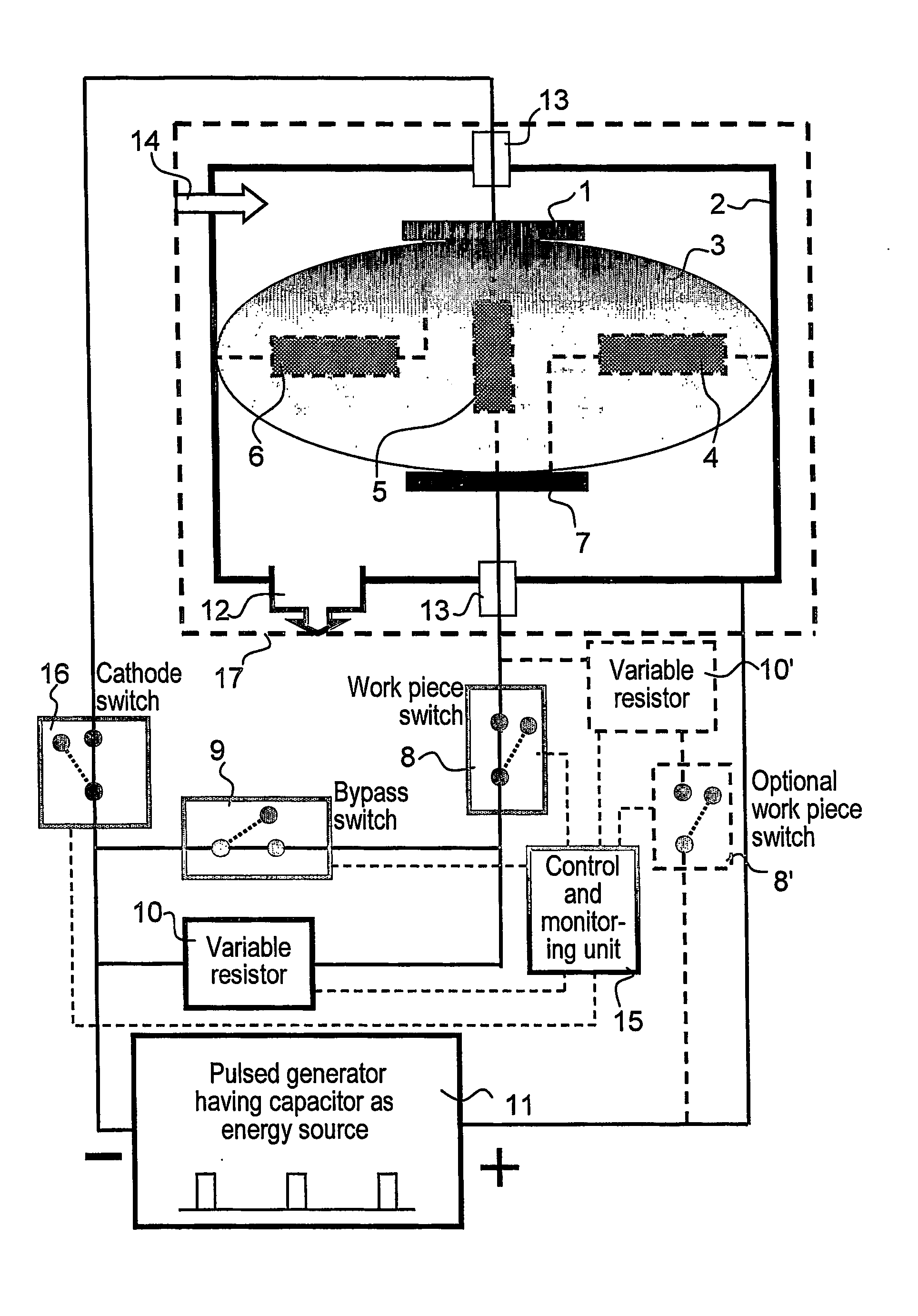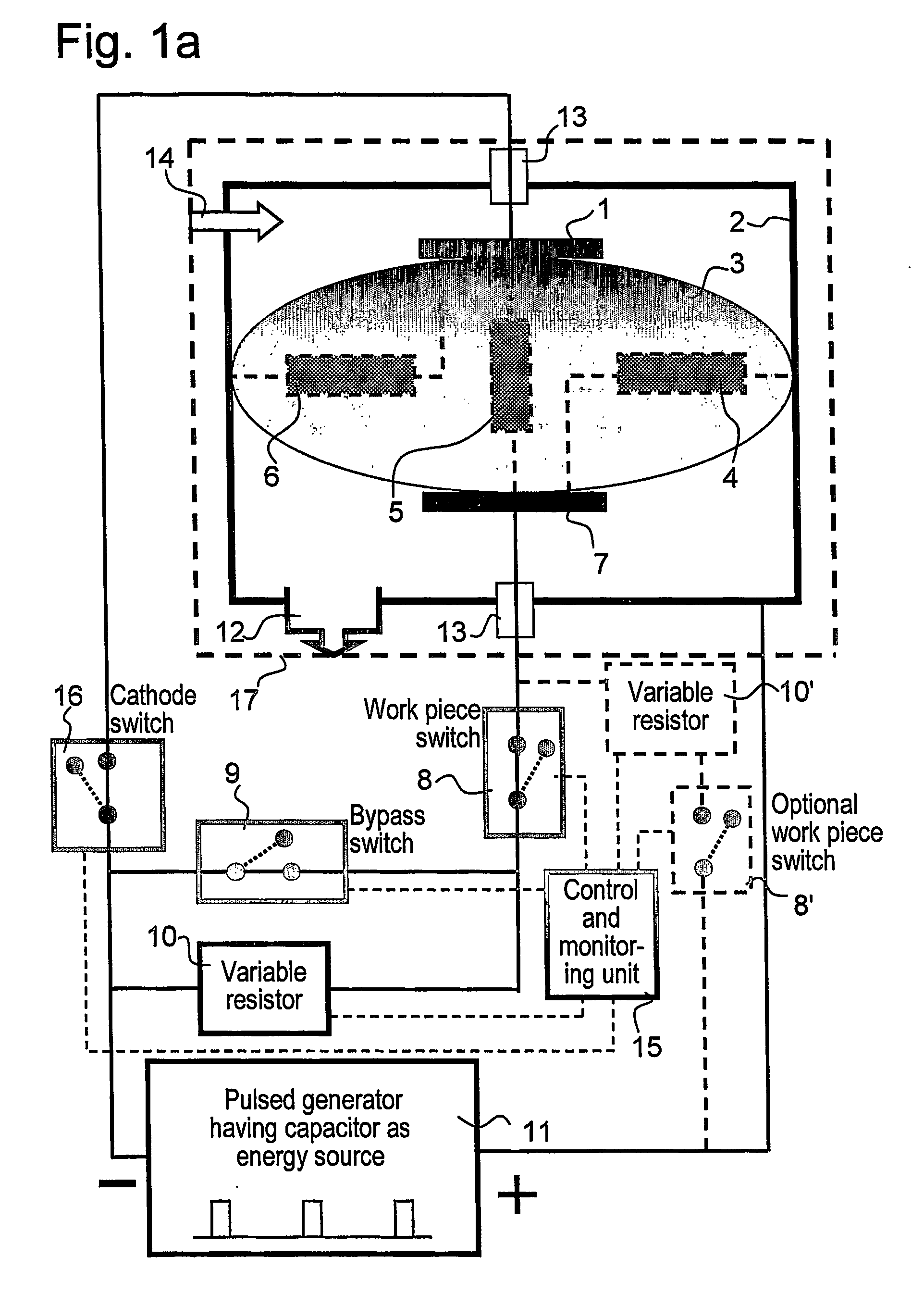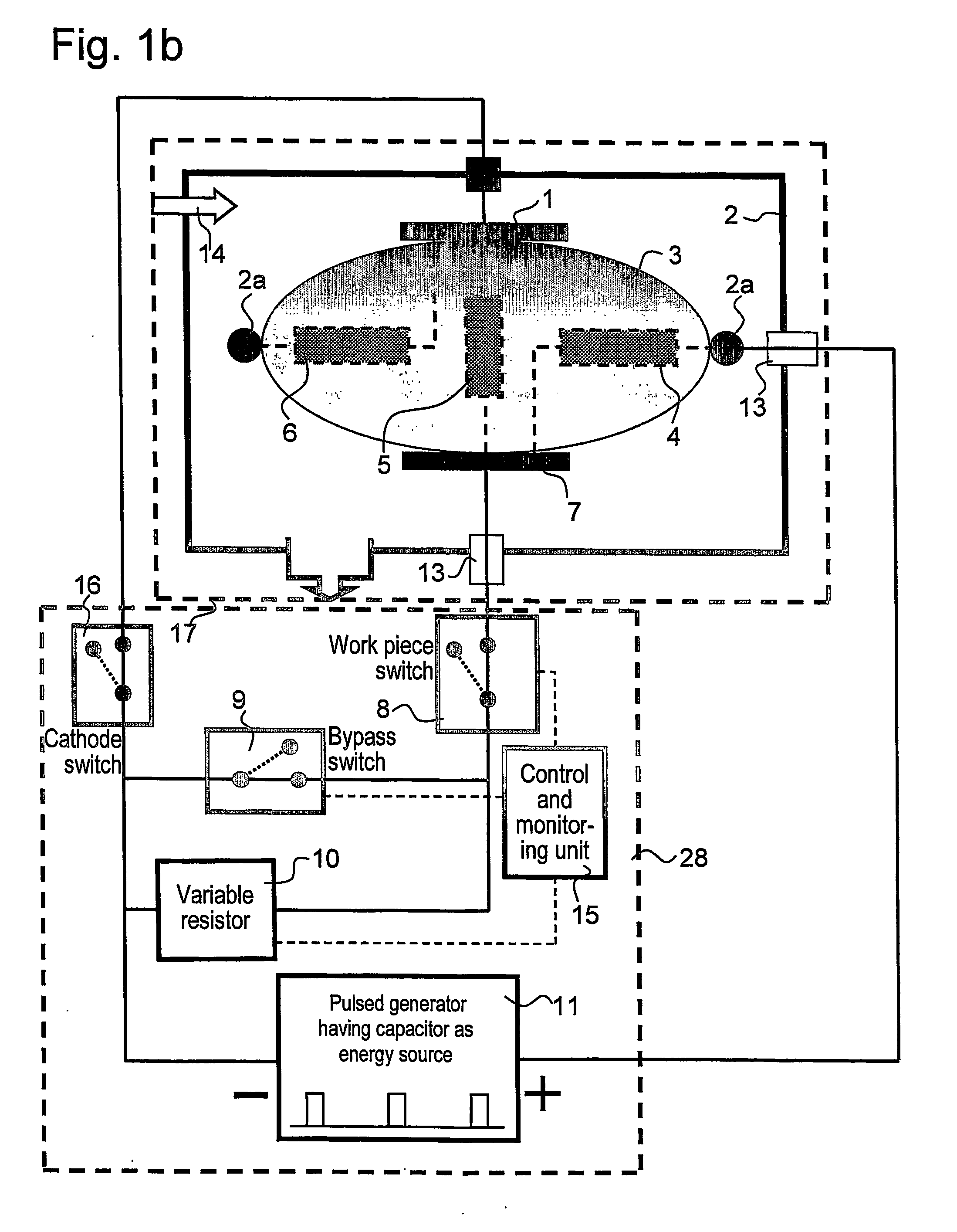Work piece processing by pulsed electric discharges in solid-gas plasma
a pulsed electric discharge and solid-gas plasma technology, applied in the direction of electrodes, diaphragms, ion implantation coatings, etc., can solve the problems of more difficult interface mixing by film deposition using preferably metal vapor than the one used in the field of high-current pulsed electric discharge of work pieces in solid-gas plasmas
- Summary
- Abstract
- Description
- Claims
- Application Information
AI Technical Summary
Benefits of technology
Problems solved by technology
Method used
Image
Examples
Embodiment Construction
[0074] For processing a work piece, in particular for modifying the surface thereof, a pulsed ion current can be applied to flow between an anode and the work piece through a periodically produced dense plasma supplied by an independent pulsed plasma generator that is operating in a pulsed regime with a magnetron sputtering cathode. The plasma can be composed of ionized gas atoms and ionized metal atoms, i.e. of gas and metal plasmas. The metal atoms are sputtered from some metal surface to form a metal vapor that is partly ionized and the ratio between the metal plasma portion and the metal vapor portion, i.e. the metal vapor ionization degree or rate, as well as the ratio between ionized metal atoms and ionized gas atoms in the plasmas are variable. The anode and the work piece act together as an electric diode such as in a discharge system. The plasma is produced by high current pulsed electric discharges between the anode and the magnetron sputtering cathode. Discharges are prod...
PUM
| Property | Measurement | Unit |
|---|---|---|
| Time | aaaaa | aaaaa |
| Time | aaaaa | aaaaa |
| Electric potential / voltage | aaaaa | aaaaa |
Abstract
Description
Claims
Application Information
 Login to View More
Login to View More - R&D
- Intellectual Property
- Life Sciences
- Materials
- Tech Scout
- Unparalleled Data Quality
- Higher Quality Content
- 60% Fewer Hallucinations
Browse by: Latest US Patents, China's latest patents, Technical Efficacy Thesaurus, Application Domain, Technology Topic, Popular Technical Reports.
© 2025 PatSnap. All rights reserved.Legal|Privacy policy|Modern Slavery Act Transparency Statement|Sitemap|About US| Contact US: help@patsnap.com



